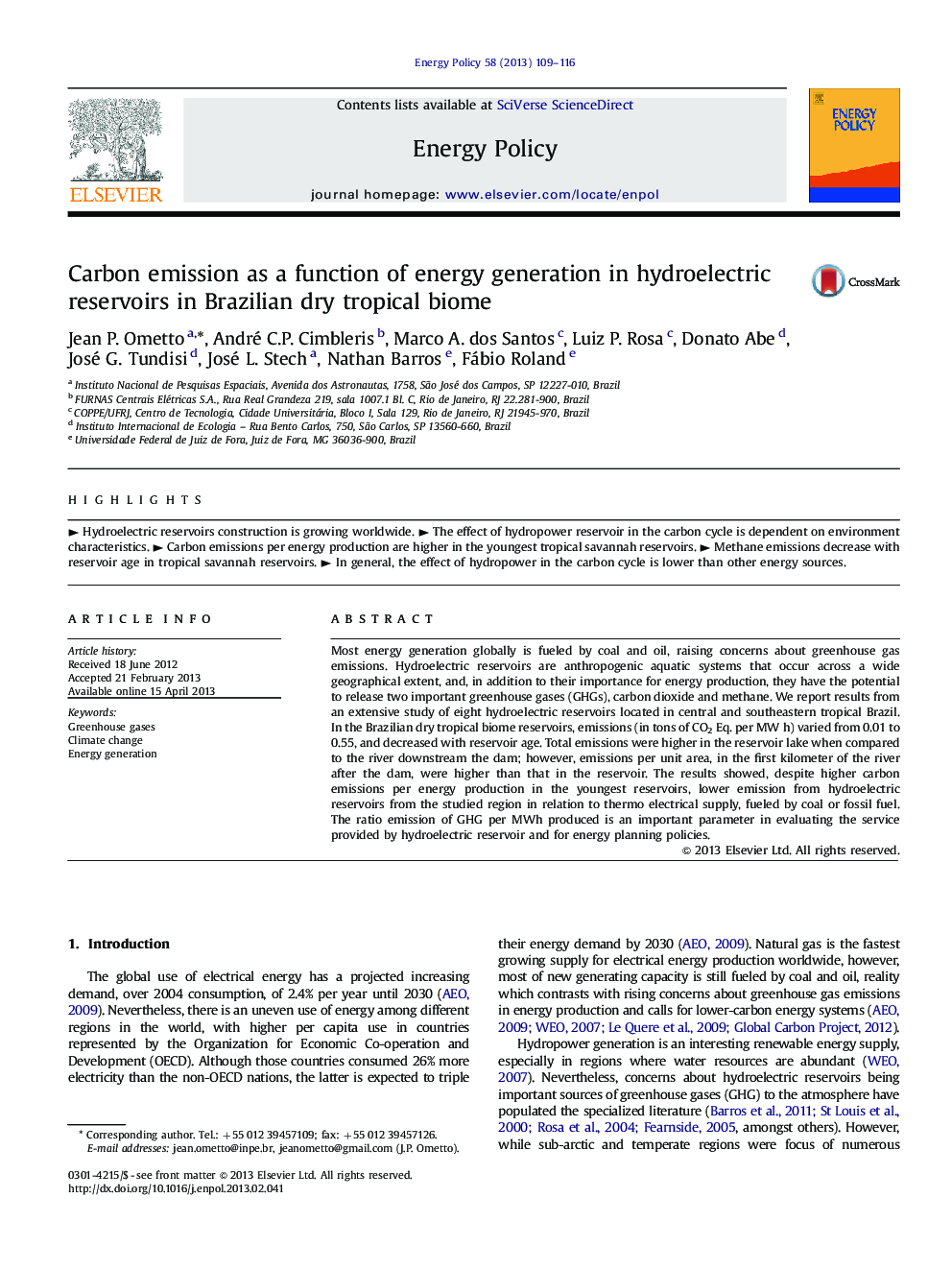| Article ID | Journal | Published Year | Pages | File Type |
|---|---|---|---|---|
| 995533 | Energy Policy | 2013 | 8 Pages |
Most energy generation globally is fueled by coal and oil, raising concerns about greenhouse gas emissions. Hydroelectric reservoirs are anthropogenic aquatic systems that occur across a wide geographical extent, and, in addition to their importance for energy production, they have the potential to release two important greenhouse gases (GHGs), carbon dioxide and methane. We report results from an extensive study of eight hydroelectric reservoirs located in central and southeastern tropical Brazil. In the Brazilian dry tropical biome reservoirs, emissions (in tons of CO2 Eq. per MW h) varied from 0.01 to 0.55, and decreased with reservoir age. Total emissions were higher in the reservoir lake when compared to the river downstream the dam; however, emissions per unit area, in the first kilometer of the river after the dam, were higher than that in the reservoir. The results showed, despite higher carbon emissions per energy production in the youngest reservoirs, lower emission from hydroelectric reservoirs from the studied region in relation to thermo electrical supply, fueled by coal or fossil fuel. The ratio emission of GHG per MWh produced is an important parameter in evaluating the service provided by hydroelectric reservoir and for energy planning policies.
► Hydroelectric reservoirs construction is growing worldwide. ► The effect of hydropower reservoir in the carbon cycle is dependent on environment characteristics. ► Carbon emissions per energy production are higher in the youngest tropical savannah reservoirs. ► Methane emissions decrease with reservoir age in tropical savannah reservoirs. ► In general, the effect of hydropower in the carbon cycle is lower than other energy sources.
